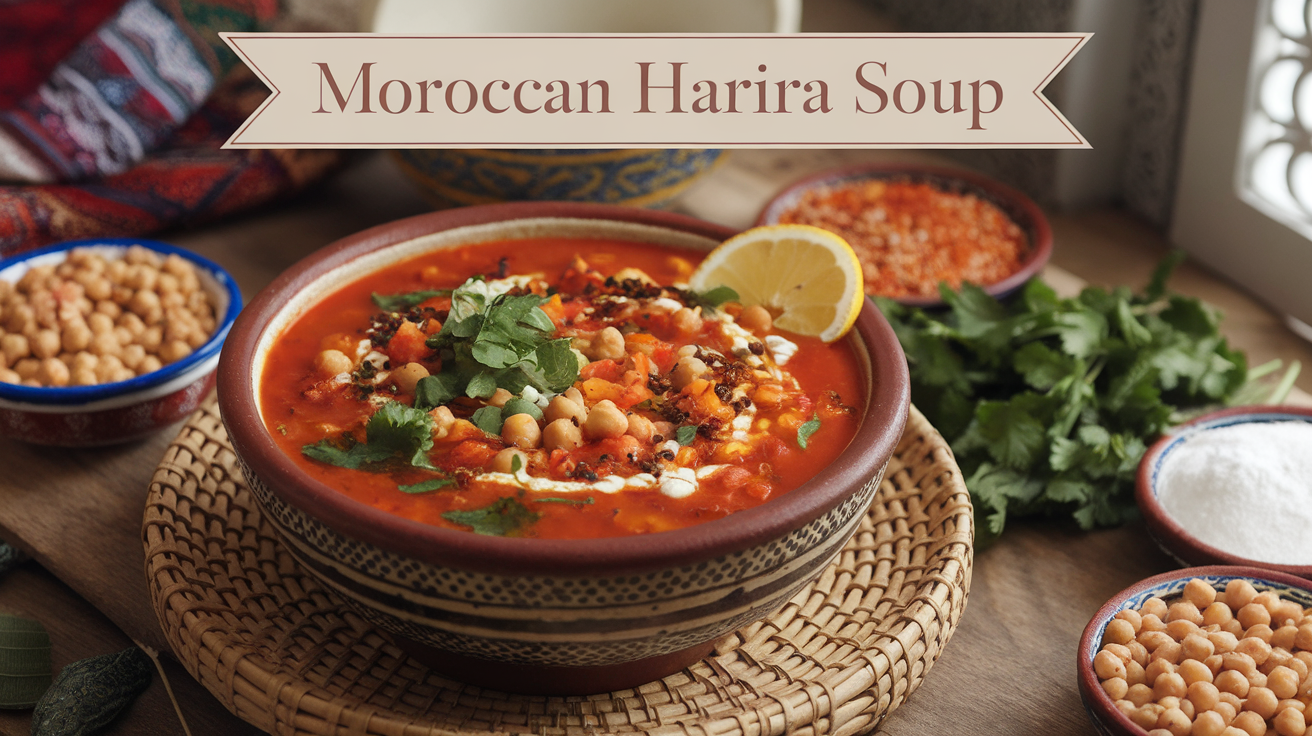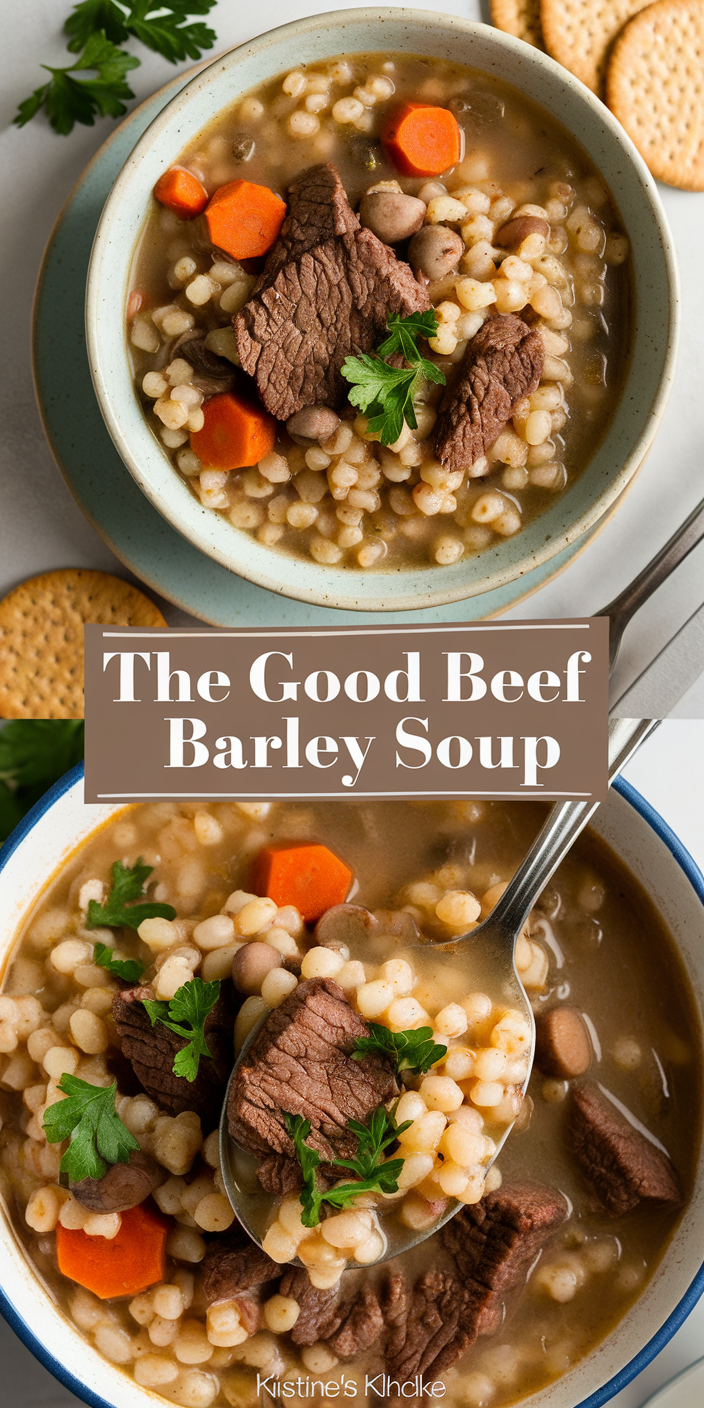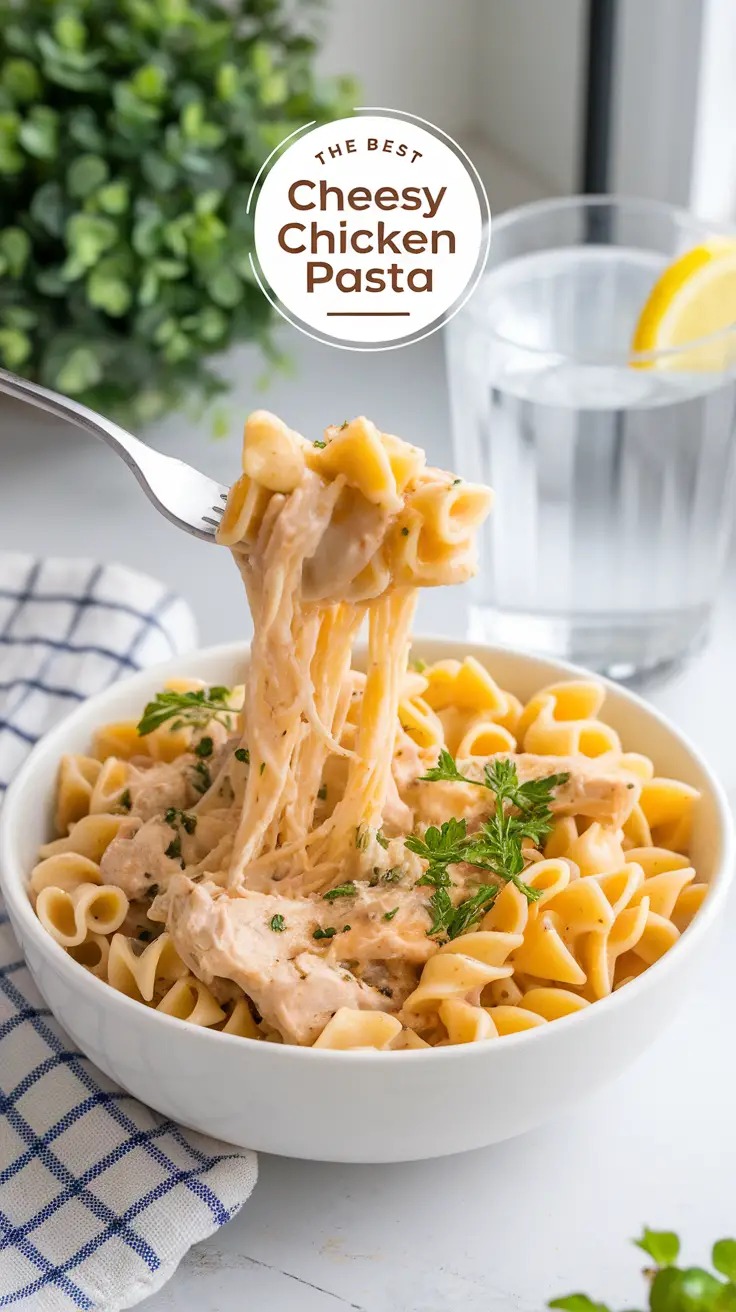Harira is one of Morocco’s most beloved and iconic soups, cherished for its rich flavor, robust texture, and the comfort it provides. This Moroccan dish is not just a meal—it’s an experience that connects families, cultures, and traditions. Harira is packed with nutrients from chickpeas, lentils, and tomatoes, and it showcases the perfect blend of Moroccan spices, offering a truly hearty and healthy soup that is rich in flavor and history. Traditionally, it’s the soup of choice to break the fast during the holy month of Ramadan, but it’s also enjoyed year-round as a satisfying meal.
In this article, we will dive deep into the origins of Harira, explore its ingredients, health benefits, and step-by-step instructions on how to prepare this Moroccan classic. Whether you are a fan of Moroccan food or looking to explore Middle Eastern recipes, this Harira recipe will give you a taste of Moroccan culture, culinary heritage, and how to prepare this nourishing and flavorful soup.
What is Harira Soup?
Harira soup is an essential part of Moroccan cuisine. It’s known for its deliciously complex flavor, combining both savory and aromatic elements. While it has been traditionally served during Ramadan to break the fast, Harira is a meal enjoyed by families and friends across Morocco and beyond. This flavorful soup is made from a combination of lentils, chickpeas, tomatoes, herbs, spices, and a variety of other ingredients that provide a nutritional punch.
The key ingredients give Harira its distinct taste and texture, with chickpeas and lentils providing the bulk, tomatoes offering a rich base, and aromatic spices enhancing the overall depth of the flavor profile. The soup is typically served with bread or dates and sometimes accompanied by fried pastry, showcasing the Moroccan tradition of eating wholesome, balanced meals that nourish both the body and soul.
A Brief History of Harira Soup
The origins of Harira can be traced back to ancient times when Morocco was a crossroads for different civilizations. Influenced by Berber, Arab, and Mediterranean cultures, Moroccan cuisine is a fusion of these diverse flavors and ingredients. Harira was initially prepared as a means of offering sustenance to those fasting during Ramadan. Over time, the soup evolved into a traditional dish served throughout the year.
As one of the quintessential dishes in Moroccan cooking, Harira holds cultural significance. It symbolizes warmth, community, and hospitality. The process of making Harira is often a communal activity, bringing people together to share a meal. Whether prepared by grandmothers for family gatherings or served in local restaurants, Harira has remained a staple of Moroccan food culture for generations.
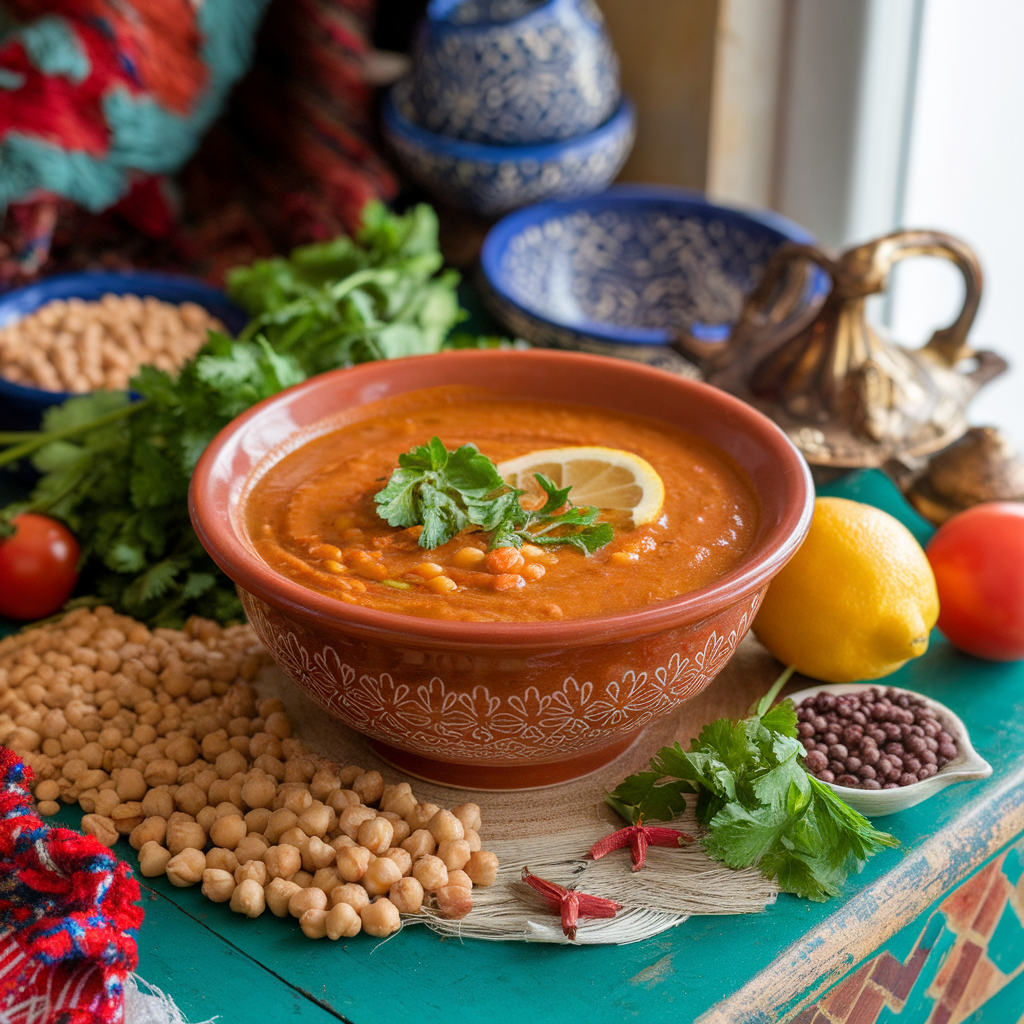
Ingredients for Harira Soup
To make a traditional Moroccan Harira soup, you’ll need a combination of simple yet flavorful ingredients that reflect the rich culinary history of Morocco. Below is a breakdown of the key ingredients for the soup:
Ingredientes Base:
- Garbanzos: Chickpeas form the heart of Harira. They are packed with plant-based protein and fiber, making them a great nutritional source for vegetarians and vegans. Their nutty flavor adds both richness and texture to the soup.
- Lentils: Green or red lentils add more texture and provide additional nutrients such as iron, folate, and fiber. Lentils cook quickly and become tender while blending into the soup’s base.
- Tomatoes: The tomatoes provide a sweet and tangy foundation for the soup. They are typically pureed or chopped to create a rich, thick base. They also bring with them vitamins A and C, which contribute to the soup’s health benefits.
- Onions: Onions are commonly used in Moroccan cuisine to add sweetness and depth to dishes. They serve as an aromatic base in Harira and work well to balance the acidity of the tomatoes.
- Celery: Celery adds a subtle, fresh flavor to the soup, enhancing the overall aroma and flavor profile of the dish.
Spices and Herbs:
- Jengibre: Ground ginger is essential in Moroccan cooking, providing a warm, spicy flavor that complements the other ingredients. It also has medicinal properties, supporting digestion and soothing inflammation.
- Canela: Cinnamon is an unexpected yet vital ingredient in savory Moroccan dishes. It adds a sweet, aromatic warmth that perfectly balances the richness of the chickpeas and lentils.
- La cúrcuma: Known for its anti-inflammatory properties, turmeric adds an earthy flavor and a vibrant golden color to the soup.
- Saffron: While saffron is an expensive spice, it imparts a distinct floral aroma and color to the soup. In traditional Harira recipes, saffron is often used to elevate the dish.
- Coriander and Parsley: Fresh coriander (cilantro) and parsley are added to the soup near the end of cooking to add brightness and a fresh, herbaceous flavor. They are integral to Moroccan cooking, balancing the richness of the dish.
- Black Pepper: Freshly ground black pepper adds a mild heat to the soup.
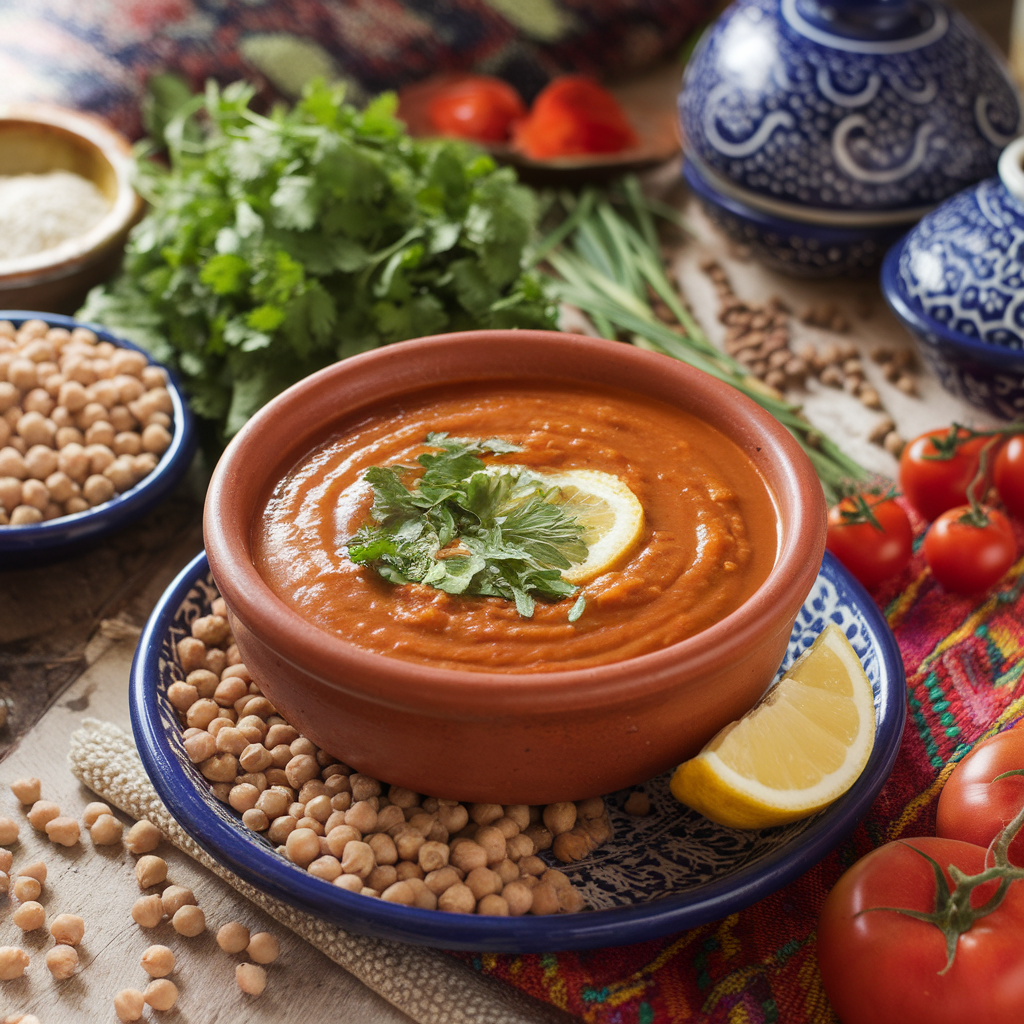
Additional Ingredients:
- Beef or Lamb: Many traditional Harira recipes call for chunks of lamb or beef to enhance the flavor of the soup. This is not mandatory, and a vegetarian or vegan version can be easily prepared by omitting the meat.
- Vermicelli or Rice: Some variations of Harira include small pasta or rice to add extra substance to the soup, making it more filling and satisfying.
- Jugo De Limón: A squeeze of fresh lemon juice before serving adds a touch of acidity, brightening the soup and enhancing the overall flavor.
- Aceite De Oliva: Olive oil is a key ingredient in Moroccan cooking, providing healthy fats that contribute to the richness of the soup.
The Nutritional Benefits of Harira Soup
Harira is not just a flavorful dish—it’s also packed with essential nutrients that make it a healthy meal option. Let’s break down the nutritional benefits of some of the key ingredients:
- Chickpeas and Lentils: Both chickpeas and lentils are excellent sources of plant-based protein, making them ideal for vegetarians and vegans. They are rich in fiber, which supports digestion and promotes a feeling of fullness. Chickpeas and lentils also provide vital vitamins and minerals, including folate, iron, magnesium, and potassium. These nutrients help support healthy bones, improve cardiovascular health, and aid in energy production.
- Tomatoes: Tomatoes are rich in antioxidants, particularly lycopene, which has been shown to protect against heart disease and support skin health. They are also an excellent source of vitamin C, which boosts the immune system and supports skin regeneration.
- Aceite De Oliva: Olive oil is known for its heart-healthy monounsaturated fats, which help lower bad cholesterol levels. It also contains antioxidants, including polyphenols, which reduce inflammation and promote healthy aging.
- Herbs and Spices: Spices like ginger, turmeric, and cinnamon are loaded with antioxidants and have anti-inflammatory properties. They also support digestion and may help alleviate joint pain and muscle soreness.
- Meat (optional): If you choose to add lamb or beef to your Harira soup, you’ll benefit from additional high-quality protein and important micronutrients like zinc, iron, and B vitamins. These are essential for immune function, energy production, and red blood cell formation.
Overall, Harira soup offers a balanced combination of carbohydrates, protein, fiber, and healthy fats, making it a nutrient-dense meal that can fuel your body and satisfy your hunger.
How to Make Harira Soup: Step-by-Step Recipe
Let’s now walk through the process of making a traditional Moroccan Harira soup. While the ingredients may seem like a lot, the process is straightforward, and the results are worth every bit of effort.
Ingredientes:
- 1 cup dried chickpeas
- 1/2 cup dried lentils (green or red)
- 1 cebolla grande, finamente picada
- 2 celery stalks, chopped
- 2 large tomatoes, peeled and chopped (or 1 can of diced tomatoes)
- 2 cucharadas de pasta de tomate
- 1/4 de taza de aceite de oliva
- 1 teaspoon ground ginger
- 1 teaspoon ground cinnamon
- 1/2 teaspoon turmeric
- A pinch of saffron (optional)
- 4 cups beef or vegetable broth (or water)
- 1/2 cup vermicelli or rice (optional)
- 1/4 cup fresh parsley, chopped
- 1/4 cup fresh coriander, chopped
- Juice of 1 lemon
- Salt and black pepper to taste
- Optional: 1/2 pound beef or lamb, cut into small pieces
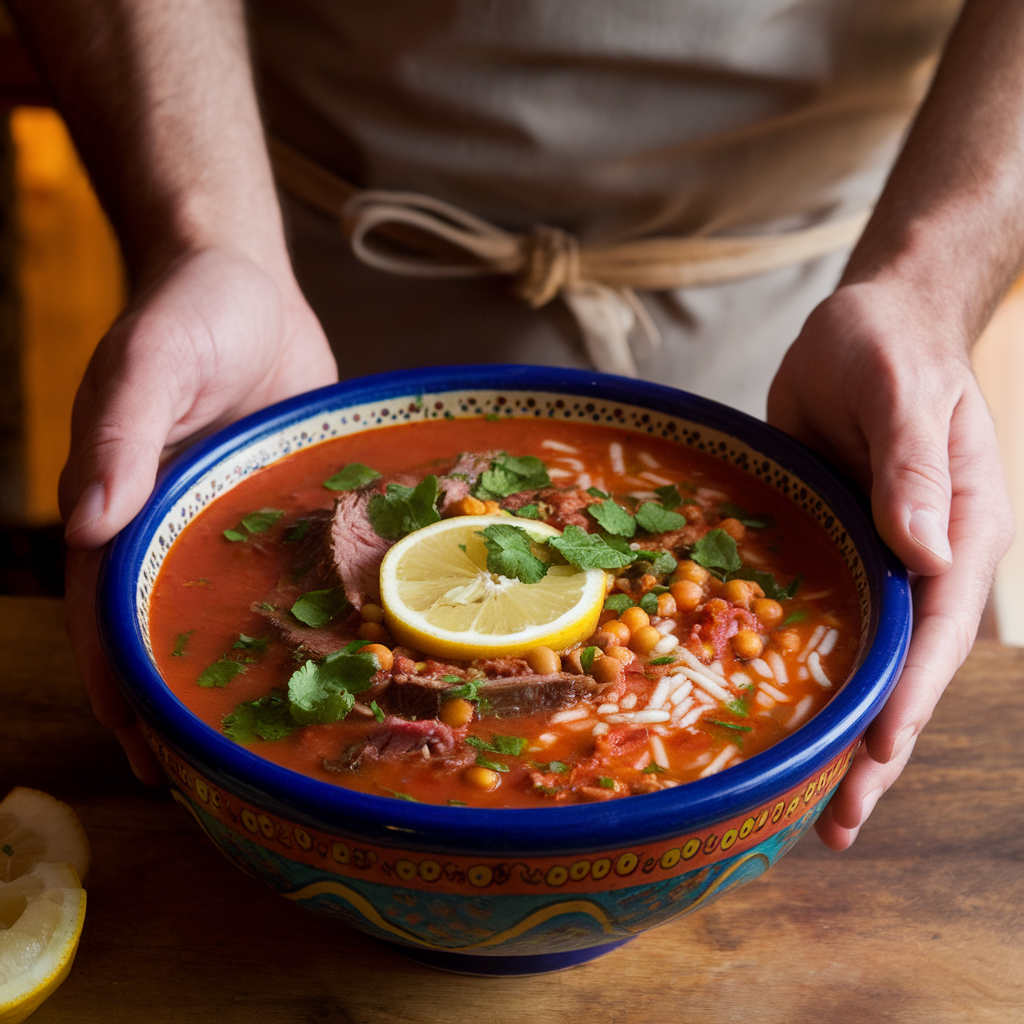
Instrucciones:
- Prepare the Chickpeas and Lentils: Soak the dried chickpeas overnight in water. If you’re using dried lentils, you don’t need to soak them. Drain the chickpeas before cooking.
- Sauté the Aromatics: Heat the olive oil in a large pot over medium heat. Add the chopped onion and celery, and sauté for 5-7 minutes until softened.
- Cook the Tomatoes and Spices: Add the chopped tomatoes and tomato paste to the pot, followed by the ginger, cinnamon, turmeric, and saffron. Stir to combine and cook for another 5-7 minutes, allowing the spices to release their aroma.
- Add the Broth and Simmer: Pour in the broth or water and bring the soup to a boil. Once boiling, reduce the heat and let it simmer for 30 minutes, allowing the flavors to meld together.
- Add the Chickpeas and Lentils: Add the soaked chickpeas and lentils to the pot. Simmer for 45 minutes to an hour, or until the chickpeas and lentils are tender. Add more water or broth if necessary.
- Add the Vermicelli or Rice: If you’re adding vermicelli or rice, stir it in and let the soup simmer for another 10 minutes until the pasta or rice is cooked.
- Finish the Soup: Stir in the fresh parsley, coriander, and lemon juice. Season the soup with salt and black pepper to taste. If you’re using meat, ensure it is tender and cooked through.
- Serve: Ladle the Harira into bowls and garnish with additional fresh herbs, a drizzle of olive oil, and a wedge of lemon. Serve with Moroccan bread (khobz) or dates for the complete experience.
Tips for Perfecting Your Harira Soup
- Spice Adjustments: Moroccan cooking is all about balance. Adjust the spices to your taste, whether you prefer a more robust flavor or a milder, subtler heat.
- Make it Ahead: Harira tastes even better the next day as the flavors continue to develop. Make a larger batch and store it in the refrigerator for up to 3 days, or freeze it for future meals.
- Customization: Feel free to add extra vegetables or protein, depending on what you have available. Carrots, zucchini, and potatoes are great additions, and shredded chicken or lamb can be included to make the soup even more filling.
Conclusion: Why You Should Try Moroccan Harira Soup
Harira soup is a quintessential dish in Moroccan cooking, loved for its warmth, depth of flavor, and nutritional value. Whether you’re looking for a healthy hearty soup to enjoy during Ramadan or a flavorful meal to share with family and friends, Harira is the perfect dish. With its combination of chickpeas, lentils, tomatoes, and spices, this soup offers a satisfying and nourishing experience.
So why not bring the flavors of Morocco to your kitchen? Try this Harira recipe, embrace the culture, and enjoy the healthy and hearty soup that has stood the test of time. This Moroccan food tradition is sure to become a favorite in your culinary repertoire.
